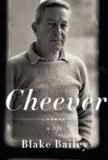A Man of Disguises
Almost 30 years ago, I wrote a long literary study of the fiction of John Cheever. In the book’s introduction, I forewarned the reader that this effort would concentrate on his writings and not be a biography. Without saying such explicitly, I hinted that any attempt to narrate Cheever’s life in any conventional way would be a fool’s errand. I had discovered on meeting and corresponding with him that the critic Wilfrid Sheed was correct: for most writers, memory and imagination are separate faculties, but in Cheever’s case they were “but one mega-faculty.” He was a storyteller by instinct as well as profession, capable of instantly conjuring up a story from a conversation overheard in a restaurant or shaping an elaborate fable from some personal mishap. Conversely, he was delightfully vague in discussing any particulars in his life or work, as if mere “facts” had departed his mind forever, unless in the interim they had been re-invented or embellished, transformed by his imaginative filters into story.
Consequently, in that same introduction I rather disingenuously claimed that I would “welcome” a full-scale biography, while unable to resist this caveat: “My fervent hope, however, is that any prospective biographer would possess a generous sense of humor and a gracious sort of skepticism, for at one with his many endearing charms, Cheever was something of a boyish scamp at heart and an inveterate teller of tall tales.”
Blake Bailey has achieved what I (along with many others) thought well-nigh impossible: an outstanding, exhaustive (but never exhausting), clear-eyed and evenhanded biography of Cheever and a literary triumph in its own right. He also is the editor of the handsome two-volume edition of Cheever’s stories and novels (just published by the Library of America), and his ease and familiarity with the fiction is everywhere in evidence. He interweaves seamlessly a narrative of events in Cheever’s life with the apt anecdote or quote from a letter or journal entry, allowing Cheever’s own remarkable prose with its distinctive wit, vigor, cadence and economic precision to enliven the factual account.
Bailey had access to Cheever’s private journal (4,300 mostly single-spaced typewritten pages in 28 notebooks), which he describes accurately as “a monument of tragicomic solipsism,” and deftly sorts the wheat (the likely “truth” of the matter) from the chaff (exaggerated boasts or misgivings, bouts of puzzling self-pity). The result is a rich portrait, gracefully limned and shaded with contrasts of light and shadow—in short, a Cheeveresque display.
Bailey remarks that the biblical reminder that the flesh lusteth contrary to the spirit is “surely the major theme of Cheever’s work as well as his life.” From the start, contrariness is all. Generations of Cheevers prior to his birth in Quincy, Mass., in May 1912 distinguished themselves mainly through eccentricities and alcoholic antics (he will invent a more illustrious Yankee seafaring pedigree). Supersen-sitive and alienated, he undergoes a miserable childhood, especially so during his teenage years, and yet later he will recreate his feckless father and shabby genteel mother into the hilarious and poignant Leander and Honora Wapshot in his finest novels. Expelled from high school (soon recasting the experience for his first published story, “Expelled”), throughout the 1930s he will shuttle between Boston, New York and the Yaddo art colony, living among leftists and bohemians, and yet will remain apolitical and yearn for bourgeoisie respectability.
In 1941 he enters into one of the most bizarre marriages ever recorded (and yet it lasts until his death in 1982), has three children (each candid about his mercurial behavior and their love-hate relationship with him), moves with his family to the ultra-respectable environs of upper Westchester county and, while there, hones his distinctive storyteller’s “voice” as he refashions the ordinary world of suburbia into fable, myth and American archetype.
Throughout the 1950s and 1960s, he hears critical huzzahs and receives prestigous literary awards, and yet simultaneously spirals downward into hopeless alcoholism and semi-deliberate self-destruction. At death’s door in 1975, he dries out, gives up drink forever, completes the novel Falconer in 1977 (a tale of fall and redemption) and becomes nationally famous, recapturing his place in the American literary pantheon. At this juncture, his life takes its most startling turn in its twisty evolution: up until then an aggressive womanizer who in his public writings scorned and loathed homosexuals (while his private journals record his repressed ambivalence), he now acts “out” his bisexuality—a development unknown to family and friends (including me) until after his death. His death from cancer in June 1982 captured headlines and countless tributes, and his reputation among the handful of “greats” in American literature seemed secure.
Alas, that was not to be. Perhaps Bailey’s superb biography and his editions of Cheever’s fiction for the Library of America will revive interest in an extraordinary writer, whose work represents the “hope to celebrate a world that lies spread around us like a bewildering and stupendous dream.”
That Cheever’s work has suffered from academic and critical neglect for the past 20 years is itself bewildering, if not stupendous. Attention must be paid. As for his life and the man himself, his friend John Updike expressed best the happy, tender memories all who knew him treasure, warts and all, by saying, “For all that, those who knew him can testify, he was a gem of a man, instantly poetic and instinctively magnanimous—one of those rare persons who heightened your sense of human possibilities.”
This article also appeared in print, under the headline “A Man of Disguises,” in the July 6, 2009, issue.








